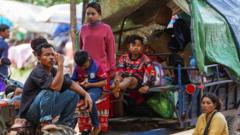In Romania, the embroidered blouse, or "ie," once merely an emblem of rural heritage, has morphed into a contentious piece of political apparel. Recently, the garment has been co-opted by nationalist figures who view it as a representation of their devotion to Romanian traditions. Notably, figures such as Diana Sosoaca, a far-right politician, have made the "ie" a central element of her public persona, often donning it in her appearances.
The fashion industry's interest in the blouse is not new; acclaimed artists and designers like Henri Matisse and Yves Saint Laurent have drawn inspiration from its intricate patterns. The blouse has also garnered attention from the likes of British singer Adele, who showcased it during a Vogue photo shoot, and luxury brand Louis Vuitton, incorporating it into their seasonal collections.
However, the pak of politicians, including George Simion, who lost a recent presidential election, have sparked controversy. Their appropriation of the blouse raises questions among liberals, who argue this is a misappropriation of cultural identity that belongs not to any single faction, but to all Romanians regardless of political beliefs.
Calin Georgescu, another ultranationalist who gained attention for his campaign efforts centered around the blouse, took to TikTok to promote his message. His videos showed him in the "ie," riding a horse and portraying an image of rural Romanian life, an example of how the blouse's traditional roots have come to symbolize modern nationalist sentiments.
Despite the growing visibility of embroidered blouses in political discourse, artisans highlighting the craftsmanship behind these garments continue to work diligently. In villages near Bucharest, many create handmade pieces, each embroidered blouse taking months to complete. As the political narrative surrounding the "ie" evolves, the attention on its traditional craftsmanship persists, reminding society of the rich cultural heritage that the blouse embodies beyond its current political entanglements.


















